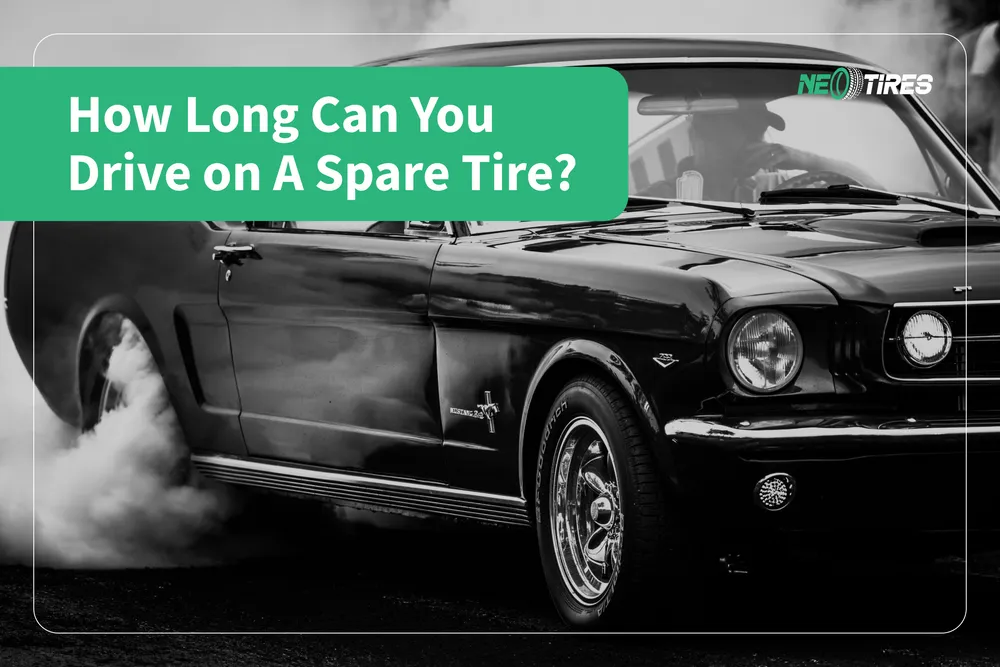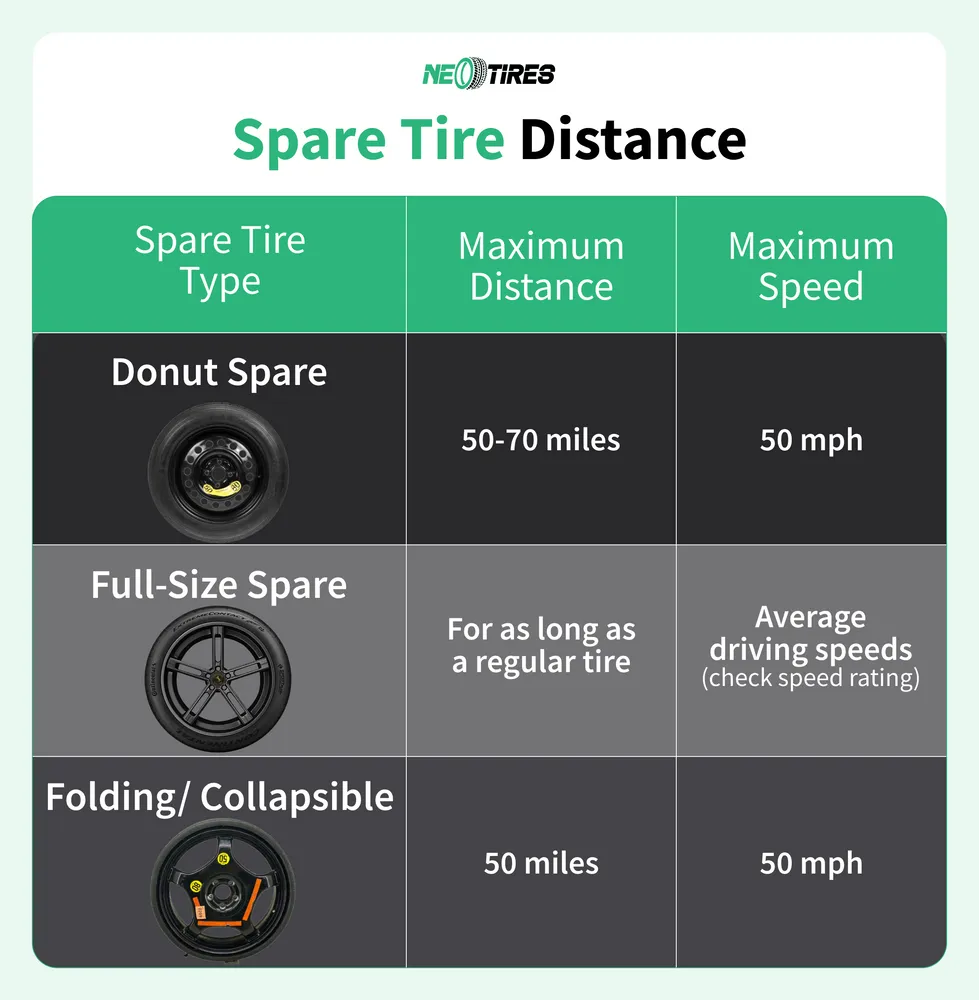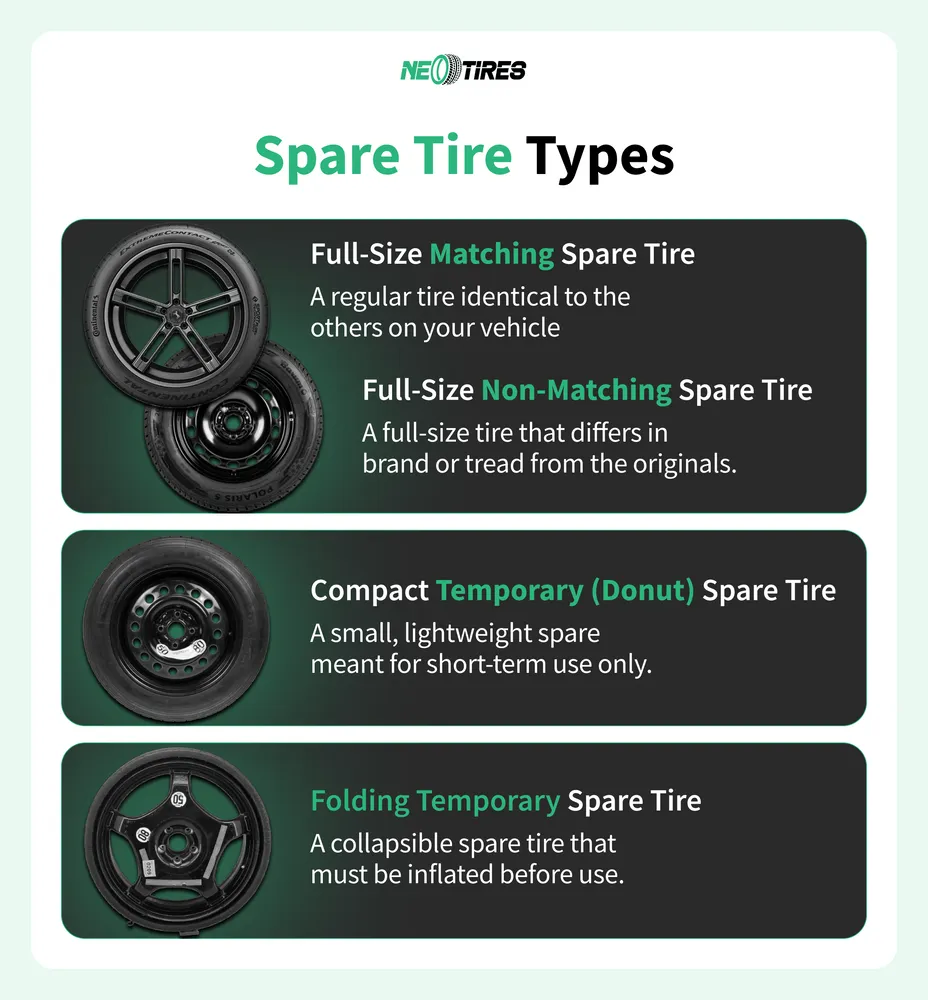A flat tire is one of the most common dangers that can befall a driver. Spare tires can save the day after a severe puncture, ensuring that you reach your destination safely. Spare tire use has limitations, however, which all drivers should be aware of.
In this article, we will talk about the distance limit that you can safely drive on a spare, what types of spares exist, what the difference between them is, and how you can ensure you reach your destination safely on different types of terrain.
How Long Can You Drive on a Spare Tire?
The driving distance on a spare tire that most manufacturers recommend is 50-70 miles, provided that the speed does not exceed 50 mph. This recommendation is specifically for the donut tire type. For a full-size spare tire, you can use it for the same period as the other tires, provided you regularly inspect tire condition to ensure it has sufficient tread depth and no damage. This responsible approach is key to maintaining your vehicle's safety.
Spare Tire Driving Limits
| Spare Tire Type | Maximum Distance | Maximum Speed | Primary Use Case |
| Compact Spare (Donut) | 50-70 miles | 50 mph | Emergency driving only, to the nearest repair shop |
| Full-Size Spare | For as long as a regular tire** | Average driving speeds* | Full replacement |
| Folding/ Collapsible | 50 miles | 50 mph | Drive towards a repair shop for ASAP replacement |
*Average speeds vary by manufacturer - check the vehicle manual and/or tire speed ratings on its sidewall
** According to Bridgestone, check your manufacturer’s specific recommendations
Spare Tire Types and Their Limitations
The most common types of emergency tires include full-size spare tires, compact or donut tires, and folding temporary spare tires. The full-size options can be matching or non-matching with the current set of tires and can usually serve for the same period as the main set. The donut type is suitable for use within a range of 50-70 miles. The folding spare tire is the most compact of all, but it requires manual inflation before use and should be mounted exclusively to access a repair shop.
Full-Size Matching Spare Tire
This tire is typically identical to the four basic tires and can be included in the rotation process. While you can drive on it for as long as regular tires, it takes up a lot of storage space in the trunk.
Full-Size Non-Matching Spare Tire
This tire is like a standard tire, but it does not necessarily match the tread pattern or size of the tires on the ground. Goodyear recommends excluding a full-size non-matching spare tire from the rotation scheme to avoid performance and tread wear issues. Using it for as long as the other tires is acceptable, but the disadvantage is the ample storage space it takes.
Compact Temporary Spare Tire
Also known as a donut, the compact temporary spare tire is more lightweight and features a shallower tread depth than a regular one. Donut tires require 60 PSI due to their smaller size, which typically results in a higher pressure than that of standard tires. While compact and space-saving, a donut tire should cover a distance of no more than 50 to 70 miles. You can expect minor deviations in ABS operation and less traction control when using donut tires.
Folding Temporary Spare Tire
A folding spare tire is collapsible and takes up the least space of all options. However, you must manually inflate it with an air pump before mounting. Driving a long distance on an inflatable tire is not safe, which means you should only use it in emergency cases to reach the nearest repair shop.
A modern alternative to spares is run-flat tires. Run-flat technology enables drivers to keep rolling safely even with low to no tire pressure after a puncture, eliminating the need for a spare tire.
What Speed Can You Drive on a Spare Tire?
The speed you can reach with a donut or foldable temporary tire should not exceed 50 mph for safety reasons. Due to the lighter materials and 60 PSI pressure (which is significantly different from that of tires on the ground), donuts cannot handle high-speed operations and heat buildup safely. You can drive at average speeds on a full-size temporary tire, provided you respect its speed rating indicated on its sidewall.
| Tire Type | Maximum Speed | Recommended Speed* | Safety Notes |
| Donut Spare | 50 mph | 45 mph | Reduced traction capability/ heat build-up concerns |
| Full-Size Spare | Variable | Check manual | Depends on tire speed rating |
| Run Flat (Flat) | 50 mph | 50 mph | Heat buildup concerns |
| Foldable Temporary Spare | 50 mph | 45 mph | Emergency use only |
*NeoTires recommends a lower speed for safety purposes
Spare Tires: FAQs
How Long is a Spare Tire Good For?
Specialists advise against using donuts for more than 50-70 miles or foldable/expandable spares for distances over 50 miles. However, you can rely on full-size spare tires for as long as your regular tires, provided you adhere to their speed rating and maintain the correct pressure. This should give you peace of mind when using spare tires.
What is The Speed Limit on a Spare Tire?
The speed limit for a donut or foldable spare tire should not exceed 50 mph, according to Bridgestone, Hankook, and Goodyear. You can drive a full-size spare tire at average speeds as long as you respect the tire speed rating, which is a measure of the maximum safe speed the tire can handle.
Can I Use a Spare Tire on a Highway?
Driving on a highway on a full-size spare tire at an average speed is acceptable. If the spare is a donut or foldable tire, the speed should not exceed 50 mph, regardless of road type (highway, urban, off-road).
Get Ready For the Road Ahead with NeoTires
NeoTires is here to help you with any tire, whether standard, spare, or run-flats. Check our catalog to find your best fit, or contact us for professional assistance. We will help you identify the best product for your specific needs to stay safe in any driving condition. Drive safe and choose your tires wisely!
Trustworthy Spare Tires
Why Trust Us?
NeoTires is a team of tire and automotive specialists with extensive experience in the tire and automotive industries. We provide unbiased tire reviews, top-quality products, real-world safety tips, and practical tire maintenance recommendations. You can trust our expertise when it comes to your tire needs.
Since 2019, we've been dedicated to simplifying the tire-buying process for you. We help you quickly find the right product for your needs, whether it's daily driving, off-roading, or farming, at a competitive price and with fast delivery. This convenience should make your tire-buying experience stress-free.







